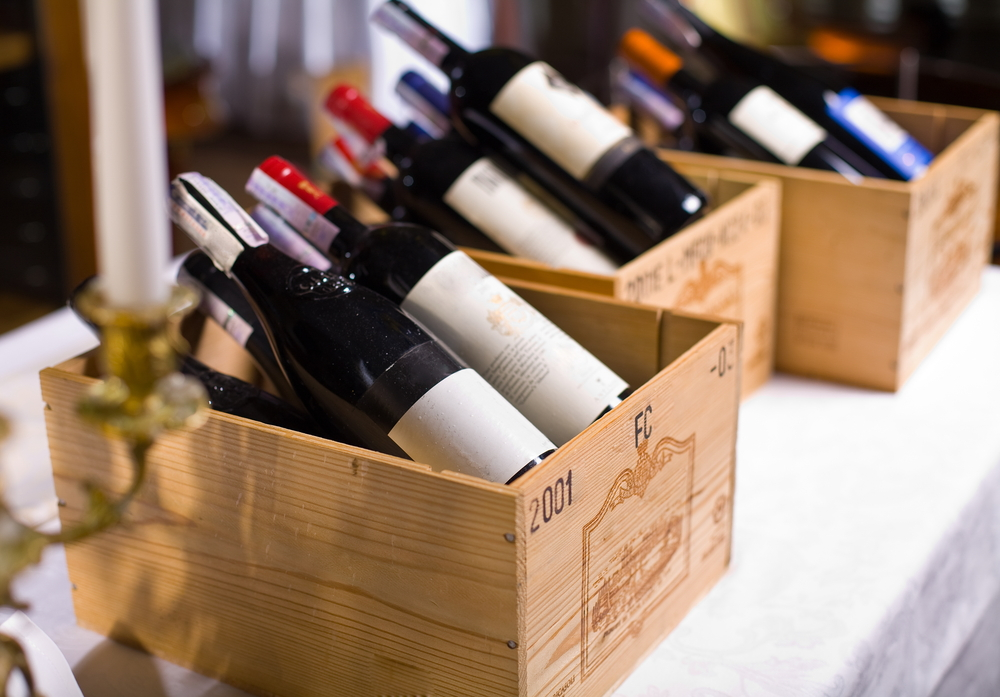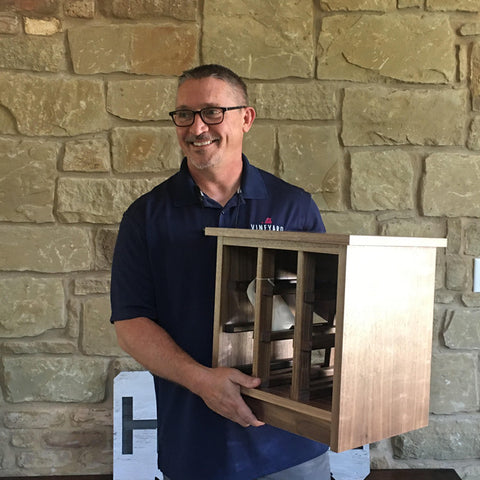When it comes to storing and aging your wine, you don't take any chances. Whether you have a collection of exquisite white wines or an array of wine bottles waiting to be enjoyed, the importance of maintaining the optimal temperature cannot be overstated.
Proper storage techniques, such as using wall units or wine cabinets, play a crucial role in creating the ideal climate for your precious vintages. From preventing spoilage to preserving flavors, these storage solutions ensure that every sip is a delight.
In this comprehensive guide, we will delve into the do's and don'ts of wine cellar cooling, exploring the best practices for safeguarding your investment and maximizing the enjoyment of each bottle. So join us as we uncork the secrets to achieving the perfect temperature for your wine collection.
Does your Wine Cellar Need to be Cooled?
In 99% of climates, a wine cellar will need to be cooled. That is because temperature and humidity fluctuation can damage the wine.
There are two ways of cooling down a cellar: Active or Passive cooling.
1. Passively Cooling - Cooling a Wine Cellar Naturally
Passively cooled wine cellars are in rooms that are naturally cool and humid. Originally wine was stored underground in caves, where it's naturally humid and the temperature remains consistent.
The deeper a wine cellar is, the less yearly variation in temperature there is, but a depth of around 15ft should offer you a reasonably small change in temperature over a year.
You can further reduce variation in temperature by properly insulating the exterior walls of your wine cellar, and not insulating the floor.
However, for most people this will be impractical, so the easiest solution is to actively cool their wine cellar.
2. Active Cooling - How to Refrigerate a Wine Cellar
Active cooling to cool down your wine cellar means using a cooling unit with ventilation, a vapor barrier, and proper insulation.
Actively cooled wine systems require more maintenance and upkeep than a passively cooled system, but they allow for much easier control of the temperature, humidity, and refrigeration levels.
Read next: Wine Storage at Home for Beginners
Can you use an Air Conditioner to Cool a Wine Cellar?
As tempting as it might be to save a few bucks, using an air conditioner to cool your cellar will ruin your wine 100% of the time. A conventional AC cools down a room too quickly, which is very damaging to the wine and strips the humidity right out of the air.
When you invest in a proper ventilation cooling system for your wine cellar, you benefit from a controlled cooling rate, which should be much slower than the speed at which a traditional air conditioner cools a room. A high-quality cooling system brings your wine cellar to the perfect temperature without removing the humidity from the air. A vapor barrier is essential as well, as it will keep mold, mildew, and fungi from infiltrating your cellar.
Read next: How to Build a Wine Cellar (the right way)
Choosing the Right Refrigeration Unit for Your Wine Cellar
Identifying the ideal refrigeration unit for your wine cellar is a crucial aspect that significantly impacts the quality of wine and the aging of fine wines. A ducted system is an excellent example of an efficient refrigeration unit that effectively maintains the wine cellar temperature. This type of system efficiently cools the air, creating an ideal environment that mimics the natural conditions of aging wine. It works silently and invisibly, with no visible mechanical equipment within the wine room.
- A ducted system enhances the aesthetic appeal of the wine room.
- It also offers flexible installation options, making it suitable for different cellar sizes and designs.
Despite the initial cost, investing in a ducted system for your wine cellar can prove beneficial in the long run. Cooling the wine cellar properly is a delicate process that directly impacts the quality and taste of your collection. The ducted system ensures that your fine wines are stored at the optimal conditions, promoting proper aging and preserving their exquisite flavors.
- Regular maintenance of the refrigeration unit is key to sustaining the quality of wine.
- Consistent wine cellar temperature and appropriate humidity levels contribute to the longevity and quality of your fine wines.
How to Choose a Wine Cellar Cooling System
When choosing a wine cellar cooling unit, you need to consider your climate and cellar design, as there are different options available depending on those factors.
The three main types are:
- Fully Ducted Systems
- Split Systems
- Through-The-Wall Systems
Climate control systems are essential for maintaining the ideal conditions within custom wine cellars, ensuring that your red wines age perfectly. A quality climate control system offers easy installation, fitting seamlessly into your cellar design while effectively managing cellar temperature and humidity levels. This makes it an indispensable addition to preserving and enhancing the complex flavors and fine quality of your red wines.
Split Systems
A split system works by separating the evaporator from the condenser. This puts the condenser where the engine noise won't be as loud, making it a great choice if your cellar is located near living space.
The condenser tends to be the noisiest part of a cooling unit, and a split system cleverly places the condenser out of the way so the engine noise won't be as disruptive. This style of system is also relatively simple to install.
You can shop Split Systems here
Fully Ducted Systems
Fully ducted systems come available as split systems or a completely self-contained unit. While these are the most expensive system, they are very easy to install and provide the least disruption. Many people choose this cooling system design if their wine cellar is underground, as they are of exceptional quality and allow for the greatest level of control in their operation, and are very useful if there are no internal walls to attach through-the-wall systems to.
You can shop Ducted Systems here
Through-The-Wall Systems
If you're looking for an inexpensive way to ventilate your wine cellar, a through-the-wall system is an excellent choice. These are typically installed between the wall studs in your cellar and are entirely self-contained. If your wine cellar is located in a basement, a through-the-wall system is ideal, particularly if you have an unused room where it can vent.
You can shop Through-The-Wall Systems here
Best Option for Wine Cellar Cooling Units
In selecting the best option for your wine cellar cooling unit, it's essential to consider the size of your cellar - measured in cubic feet - and the type of unit that best fits your needs. Split Systems, Fully Ducted Systems, and Through-The-Wall Systems all have their unique benefits, and the choice largely depends on your cellar's size, location, and your personal preferences.
Meanwhile, wine cellars are about more than just temperature control; they're about creating optimal conditions. A good cooling system helps maintain the right humidity levels and prevents drastic temperature shifts, both critical in avoiding unwanted chemical reactions in your wine. Therefore, consider your cellar's specific needs and consult with a professional before deciding on the type of unit.
Does a Wine Cellar Need Ventilation?
Wine cellars need proper ventilation to control the temperature and create the perfect aging conditions for wine. To achieve this, you need a cooling unit that can handle temperatures up to 55°F cooler than the temperature on the unit's exhaust side.
For example, if you want to maintain a temperature of 50°F in your cellar, then the room where you have your exhaust should never be higher than 100°F.
You need to ensure that your wine cellar provides ample ventilation for the cooling system's exhaust so that it can sustain the right temperature at all times.
Ventilating the heat that a cooling system generates is crucial to maintaining your wine cellar's proper temperatures and climate conditions.
Does Humidity Matter for Wine Storage?
Yes humidity is really important for wine storage. Humidity keeps the cork from shrinking and drying out.
If your cellar is too dry, the cork becomes shrunken and damaged from the lack of moisture, which then lets in air and ruins your wine by literally turning it into vinegar.
Too much humidity can also lead to mildew and mold, which is why it's vital to keep your wine cellar at the perfect relative humidity level.
Here are the main factors affecting humidity in your cellar:
- Climate
- Temperature
- Season
- Region/Geography
- The quality of your cellar
Protecting Valuable Wine Collections: The Importance of Optimal Conditions
Preserving valuable wine collections requires more than just a standard storage area. To ensure the highest quality, it is critical to maintain precise humidity conditions. High humidity conditions can lead to unwanted mold and mildew, which can negatively affect the wine's taste and overall quality. On the other hand, too little humidity can dry out the cork, allowing air to enter the bottle and potentially spoil the wine.
- Ideal wine storage: This necessitates the use of specially designed wine coolers or a climate-controlled wine cellar, both of which are adept at maintaining the necessary balance of temperature and humidity.
- Constant fluctuations: These are to be avoided at all costs as they can cause the wine to expand and contract, leading to potential flavor changes.
Establishing and maintaining the perfect environmental conditions in your wine storage area is a critical step in protecting your valuable wine collections. A climate-controlled wine cellar or a high-quality wine cooler can help maintain a consistent, balanced temperature and humidity level, ensuring your wines age appropriately and maintain their quality.
Climate Control System: A Key Player in Wine Cellar Management
The climate control system plays a vital role in the safeguarding of your wine collection. It ensures the cellar environment maintains a low temperature, which is crucial for the preservation of your wine's quality. This system works round-the-clock, actively balancing the temperature and the humidity in your wine cellar. Low temperatures slow the aging process, keeping your wine fresh and ready for consumption.
The consistency of temperature is another important aspect the climate control system manages. It works to maintain a constant temperature, preventing fluctuations that could potentially harm your wine. In times when warm air is introduced to the cellar (say, when the door is opened), the climate control system kicks in, cooling the warm air and maintaining the required temperature. It's essential to choose a high-quality climate control system that can efficiently manage:
- Low and constant temperature
- Warm air mitigation
- Humidity levels
- Seasonal changes
- Overall cellar climate conditions
How to Control Humidity in your Wine Cellar
For Humid Climates
If you live in a humid climate, then you want a cooling system that can keep a relative humidity of about 50% to 70%.
A premium-grade cooling unit can get the excess moisture out of your cellar via condensation or a drain line.
The benefit of using a unit is
For Dry Climates
If you live in a dry climate, then it's harder to control the humidity.
Cooling systems can't create humid air, so you need to use a non-heated humidifier or a small water fountain to help add moisture to the air.
You can use a humidity monitor to help manage this.
Summary
If you have a wine cellar, it's crucial to keep it adequately ventilated, cooled, and climate-controlled, no matter if it's located deep underground, in a basement, or in a spare room.
The temperature, climate, and humidity of your wine cellar affect how the wine ages and how it will ultimately taste.
Take every factor of your particular wine cellar into consideration when selecting the right cooling unit for your wine.
Contact us here at Wine Cellar HQ and check out our collection of superior quality cooling systems to protect your investment and properly age your wine.


